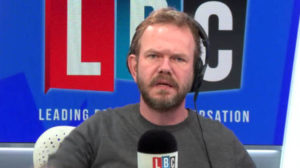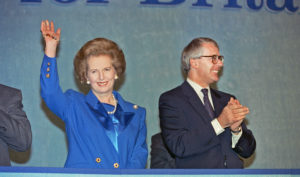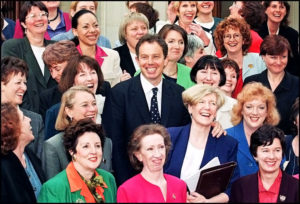“Has Morrissey gone too far this time?” It’s a question that could have been asked on any given day in the last 30 years. But this specific occasion is one of the earliest examples of the genre: the NME’s response to the singer walking on stage in Finsbury Park on 8 August 1992 with a flag in his hand, a Union Jack that he subsequently waved around as he sang “Glamorous Glue” from his new album.
It wasn’t one of Morrissey’s more successful gigs. He was the support act at a much-anticipated reunion of Madness, a band who drew a very different crowd to him, and he wasn’t entirely appreciated. He looked increasingly displeased, truncated his set, and then withdrew from the second of the two nights, complaining about “the abysmal behaviour of a small group of loathsome yobbos”. (He later refined this to “a small selection of rather dull North Londoners”.) Meanwhile in America, tickets for his forthcoming show at the Hollywood Bowl sold out in 23 minutes, beating the record set by the Beatles. Now he knew how Jesus felt: a prophet being without honour in his own country and among his own kin.
It was ironic, then, that “Glamorous Glue” should have been, in part, a lament for a lost British culture, swamped by a wave of Americanisation. “London is dead,” he sang — to fans of the most London act this side of Ian Dury (also on the bill).
It wasn’t the Union Jack that irked the hostile sections of the crowd. Their reaction was more to do with long hours of drinking, an impatience to relive their younger days with the Nutty Boys, and a suspicion of a bloke from Manchester wearing a gold-lamé shirt, split to the waist, prancing about in front of images of androgynous-looking skinhead girls. The previous year Morrissey had said his perfect audience would be “skinheads in nail polish”, but there weren’t many of them in Finsbury Park 30 years ago.
On the other hand, it very definitely was the Union Jack that provoked the NME to devote its front cover and five inside pages — some 6,000 words — to that question of whether he’d gone too far this time. Because the flag had been seen as deeply suspect in Leftish culture for some time. It conjured up images of the Empire, now regarded as a Bad Thing in progressive circles, and it had become associated with extreme-Right groups. There was a fine line between patriotism and racism, and the national flag was seen to sprawl all over it. There was, proclaimed the NME, no room for irony when it came to “the Union Jack, with all its ambiguities”. The paper’s charge sheet against Morrissey cited song lyrics and quotes from interviews, to show that he had long been “toying with far-Right/fascist imagery, and even of racism itself”, with the flag as the last straw. Stopping short of calling him a racist, the paper concluded that “he has continued to pick away at the scab of race relations”.
Revisited three decades on, the striking feature of the NME’s denunciation is how dated it all seems for the time. The reference points are those of the Seventies: skinheads, football hooligans, the National Front. And there’s mention of previous transgressors Eric Clapton and David Bowie, whose comments in 1976 had prompted the creation of Rock Against Racism. (Clapton had spoken in support of Enoch Powell; Bowie nominated himself as a fascist dictator for Britain.) It feels like a rear-view mirror, looking back to the dawn of Margaret Thatcher’s premiership, when post-punk pop could be both oppositional and successful, and when the circulation of the NME was twice what it now was. It’s like the last shout of a passing era.
Ten months later, a new Manchester band, Oasis, began circulating a demo tape, the cover of which had an image of the Union Jack swirling towards the centre as though disappearing down a plughole. “It’s the greatest flag in the world and it’s going down the shitter,” explained Liam Gallagher. “We’re here to do something about it.” It wasn’t long before the Union Jack was all over popular music, from Noel Gallagher’s guitar and Geri Halliwell’s mini-dress to David Bowie’s distressed frock-coat designed by Alexander McQueen. A new day had dawned, had it not?
In this era of cultural branding — Britpop, Cool Britannia, the YBAs — the Union Jack was flown proudly as the national trademark. The associations now were with the Swinging Sixties, when Britain was losing an empire and finding a new role as purveyor of music, movies and style to the world, when the flag had been ubiquitous, celebrated as a classic design by commerce and culture alike. In the Nineties resurgence of popular culture, the Union Jack spoke of Peter Blake and The Who rather than Enoch Powell or the Raj.
And where culture went, politics was sure to follow. Tony Blair’s speech to the 1996 Labour conference ended with a projection of the flag, much to the horror of the old Left. “It was the National Front,” shuddered Tony Benn, in his diary, “and it made me absolutely sick.” But Benn was stuck in the past as well, and couldn’t appreciate that things were different now. The title of Blair’s recently published book spelt it out: New Britain: My Vision of a Young Country. The Union Jack was the symbol of this reborn nation. “We have reclaimed the flag,” declared Peter Mandelson. “It is restored as an emblem of national pride and diversity. Restored from years as a symbol of division and intolerance.”
It was fun, it was colourful, it had no baggage, none of those “ambiguities” that once troubled the NME, because New Labour memories were too short to include the imperial past. Admittedly, there was a moment when one of Blair’s speeches in the 1997 election campaign was initially written to address a longer history, but only in celebratory terms: “I am proud of the British Empire.” And even that didn’t happen, because Robin Cook, the shadow Foreign Secretary, had the sentence deleted from the draft.
Meanwhile, the fear of neo-Nazis had receded so far that the Euro 96 football tournament even saw the Cross of St George adopted by England fans. This wasn’t a reclaiming, since it had never been much-used except by the far-Right. It became sufficiently popular to attract politicians, and, come Euro 2004, Downing Street itself was flying the St George Cross — believed to be for the first time ever — to celebrate England’s triumphant progress to a quarter-final defeat on penalties. It annoyed some Scots, but it was typical of Blair’s gesture populism.
Just as characteristic was that Gordon Brown should decide to fly the same flag over Downing Street on St George’s Day 2008. Brown worried a good deal that the English might take against him for being so Scottish, but his fears were just an acute form of New Labour’s wider obsession with being seen as patriotic. Seeking to spike Tory guns, Blair’s party laid claim to the entire nation. “New Labour is the political arm of none other than the British people as a whole,” declared the manifesto in 1997. “Our values are the same: the equal worth of all, with no one cast aside; fairness and justice within strong communities.”
If that seemed a little vague, there was no greater precision forthcoming. Blair later talked about “standing up for British values — for example, rights coupled with responsibilities, duty, fair play and open-mindedness”, which got us precisely nowhere. His spokesperson blurred the picture even more: “Britishness to us is about issues as varied as how you manage the economy, the approach you take to issues like unemployment, your vision of society.” And Brown merely reheated the same thin gruel, speaking of “common qualities and common values that have made Britain the country it is.” If none of it quite made sense, you could always clutch at the flag to cover a multitude of meanderings. For a while, bolstered by the imagery of Cool Britannia, it did help deflect criticism of a government that sought greater integration into the European Union, that encouraged immigration on an unprecedented level, that allowed the US to set its foreign policy.
But the tide was turning, both culturally and politically. There was a slow Tory resurgence: from their low-point in 1997, they increased their share of the vote in the next six elections. And by the time of the 2009 European Parliament elections — when Labour was beaten into third place by Ukip and the BNP picked up close to a million votes — the talk was of recession, illegal war, MPs’ expenses and grooming gangs.
If the NME’s attack on Morrissey provided a full stop to a period of politically engaged, alternative culture, then Danny Boyle’s opening ceremony for the 2012 Olympics did the same for Cool Britannia and New Labour. Which is why it’s so fondly remembered by so many, a last hurrah for a happier time. The Industrial Revolution, the NHS, post-1960 popular culture — it was enough to make you feel proud of a creative, communal, cool nation.
Things are different now. Flags are different.
On the day of the Rochester & Stroud by-election in November 2014, Emily Thornberry tweeted a photo of a white van parked outside a nondescript yellow-brick house, on the side of which hung three St George flags. The picture was captioned “Image from #Rochester”, and it was widely seen as being a patronising, Islingtonian sneer. Even as Ukip was winning the by-election, Thornberry resigned from her post as shadow attorney general, and historian turned Labour MP Tristram Hunt spelt out the official position: “We are hugely in favour in the Labour Party of people expressing pride in their national identity and national symbols.”
No one was convinced. No one believed for a second that Hunt, let alone Thornberry, would ever dream of draping a flag from their own houses. It wasn’t the kind of thing that was done in polite society, and anyway the flags — both the Union Jack and the St George Cross — were again being treated with suspicion: they were, to put it bluntly, a bit Ukip-y.
This is all the more so since the 2016 referendum, of course. The Union Jack is now seen by some — on both sides — as anti-European. A photo of it on Twitter will prompt a wave of denunciations of “flag-shaggers” (often from those with an EU flag in their profile). And since the creative industries — to use Blairite terminology — were and still are predominantly pro-Remain, popular culture takes a less celebratory line. The modern equivalent of Geri Halliwell’s frock at the 1997 Brit Awards was Stormzy’s Union Jack stab vest, designed by Banksy, at Glastonbury in 2019, a much darker vision of the nation. The artists and musicians have moved on.
All of which gives Sir Keir Starmer a problem. Post-Brexit, post-Corbyn, like Blair he’s anxious to assert his patriotic credentials. But popular culture isn’t with him, and the brazen flag-waving of the Nineties isn’t appropriate now. Instead, he treats the Union Jack with reverence, a furled flag on either side of the quasi-presidential podium for a speech, or next to him behind a statesman’s desk as he talks frankly and seriously to the nation. It’s meant to be prime ministerial, but that also means that he’s using the same imagery as the actual prime minister, both the current incumbent and his likely successor. In his glory years, Blair went further than that, arguing that it was the Tories who were unpatriotic: “It is no good waving the fabric of the flag when you have spent 16 years tearing apart the fabric of our nation.”
On the other hand, the Union Jack has made a notable comeback in retail circles. Culture and commerce have parted company. As the post-Brexit advertising for Vauxhall cars — “a British brand since 1903” — suggests, the market is convinced that there’s mileage in the old flag yet. The meat aisle in Aldi is adorned with the Union Jack, and it appears on products from milk and chicken thighs to Shreddies and strawberries — even on sugar that has been grown and refined abroad but packaged in Britain. It’s also to be found on Scotch beef, to the irritation of those Scottish nationalists who would rather see the use of the Saltire. And, presumably, to the fury of the militantly vegan Morrissey.
Disclaimer
Some of the posts we share are controversial and we do not necessarily agree with them in the whole extend. Sometimes we agree with the content or part of it but we do not agree with the narration or language. Nevertheless we find them somehow interesting, valuable and/or informative or we share them, because we strongly believe in freedom of speech, free press and journalism. We strongly encourage you to have a critical approach to all the content, do your own research and analysis to build your own opinion.
We would be glad to have your feedback.
Source: UnHerd Read the original article here: https://unherd.com/







